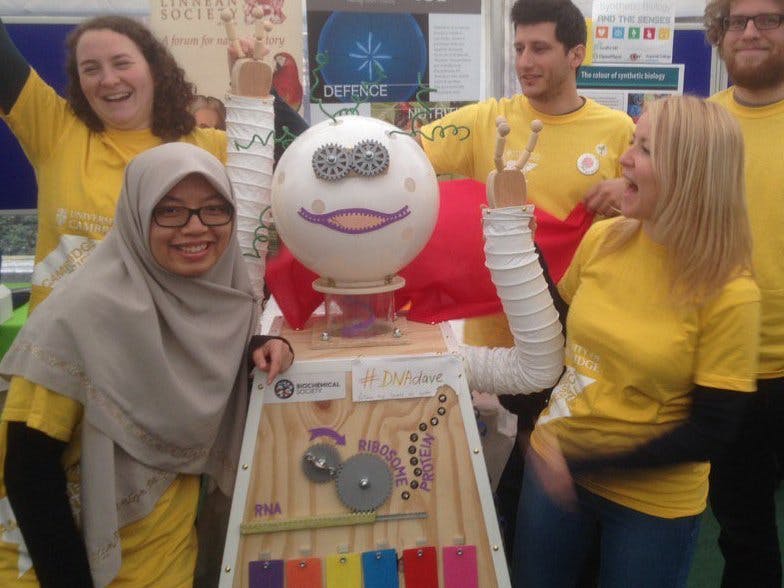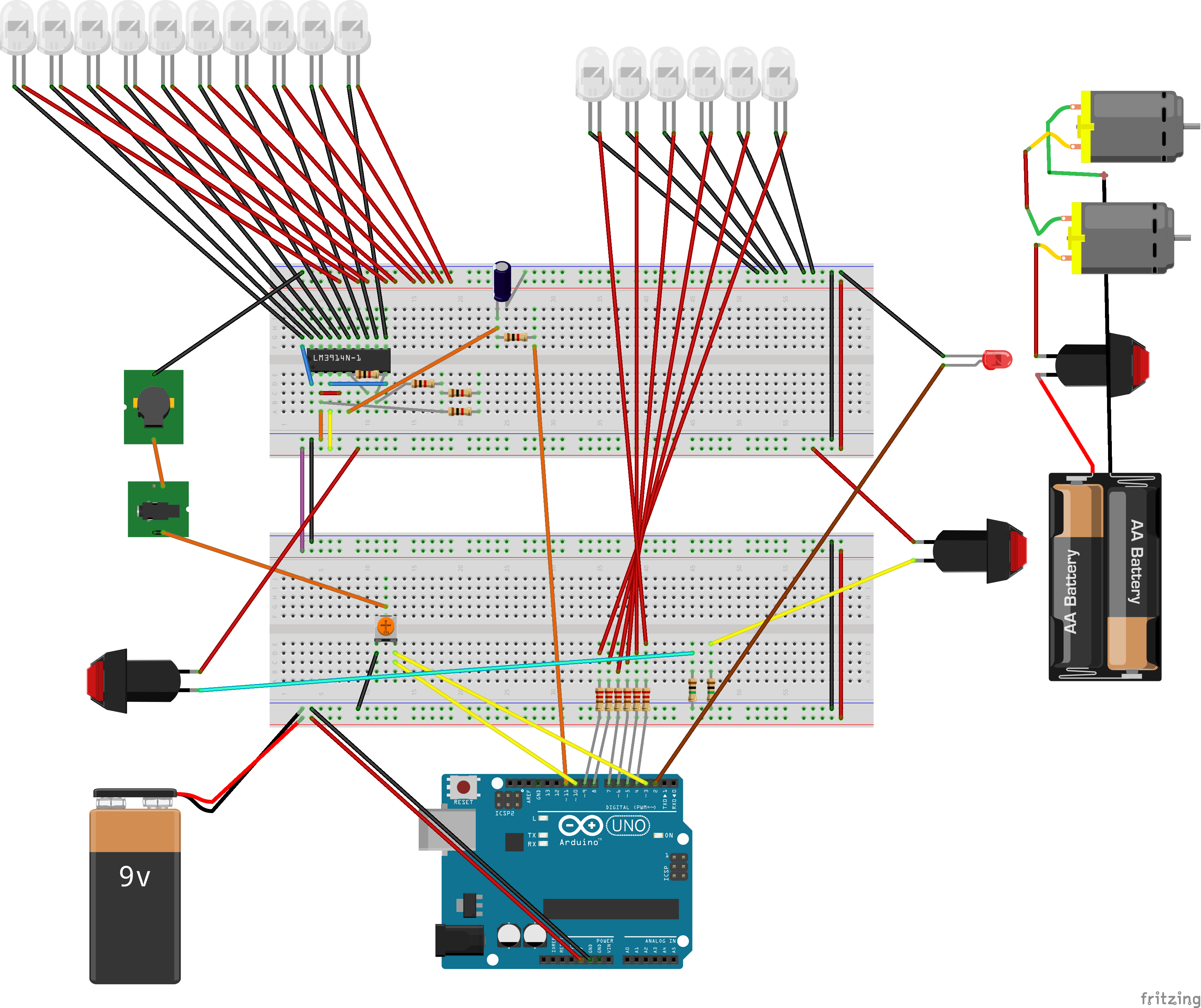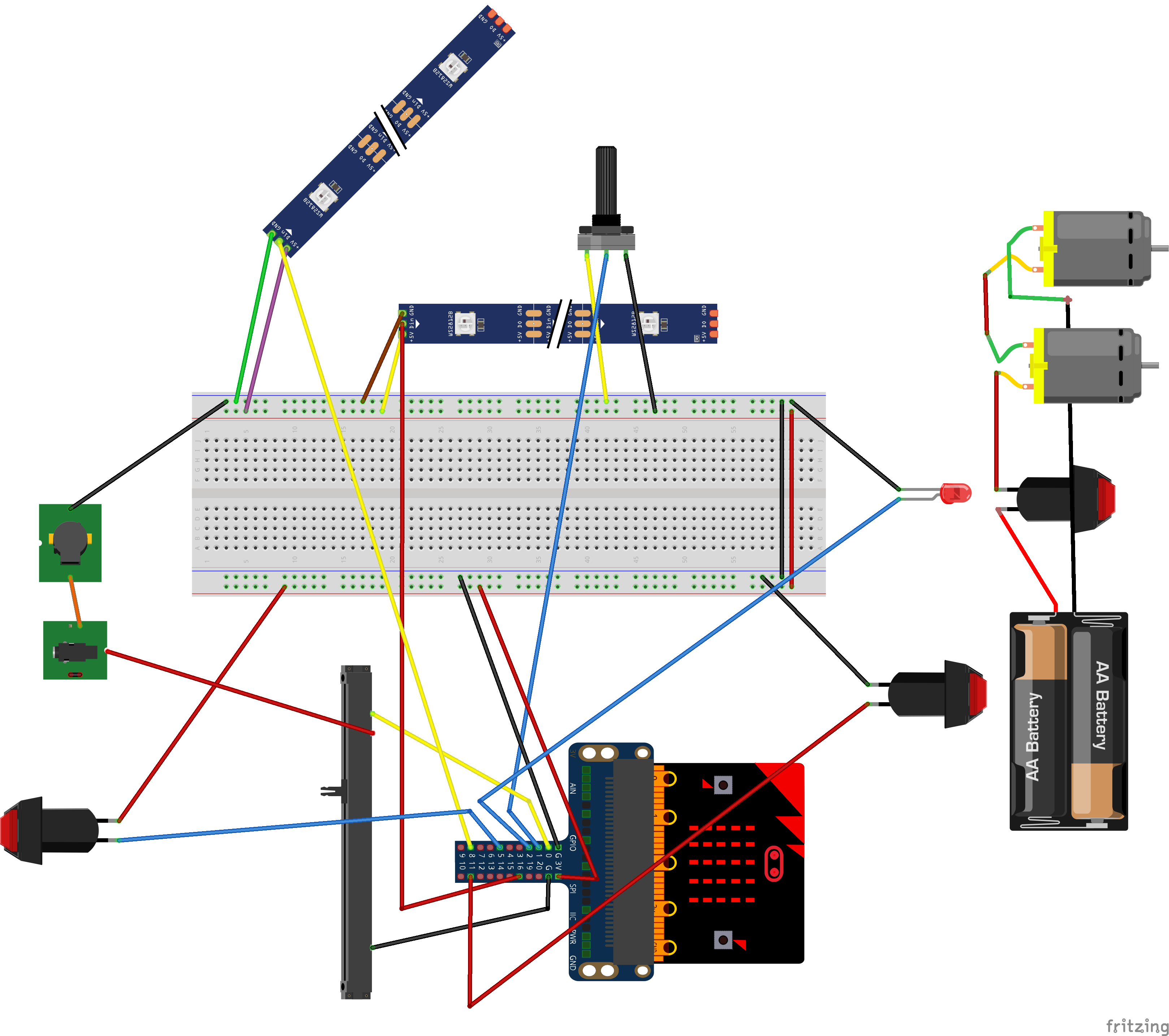In the spirit of Simone Giertz, we embarked on a journey to make a fun robot. The goal was to help kids understand basic biology. DNA-Dave has a nucleus for a head, mRNA for hair, DNA complementary strands for eyes and lips. in his belly, there is a ribosome: the protein complex that is responsible for translating RNA to protein. By interacting with Dave, a child is immersed in a completely new world, where "transcription" and "translation" are the ideas it needs to understand to get to the goal: a working protein, dispensed by Dave!
Here we will present how Dave works, how kids interact with him, his quirks and features, and then document his transition from an Arduino board to a micro:bit. We will also present microDaves, little working DNA translators that kids will be making using micro:bits and LED strips, at a workshop designed to teach how you get from DNA to protein, the universal genetic code, and how folding of RNA and protein can happen due to the sequence of the molecular chain.
In the first iteration of DNA-Dave we used an Arduino Uno as the microcontroller to drive the various components. You can find the schematics, pictures of the build and Arduino code below:
We made a simpler version of the DNA Dave software to work with the BBC micro:bit microcontroller. We then made the wiring of Dave to be easily accessible for a micro:bit using a breakout board (octopus:bit) and a small breadboard. Due to the small number of PINs available without crosstalk with other functions of the microbit, we changed the LEDs of Dave to be individually addressable strings of LEDs, and used the microbit code we attach here to drive him. A full breakdown of microbit-Dave will be writen here shortly.
miniDaves:Big Dave, in his quest to teach kids the core concepts of biology, needs little helpers. They come in the form of miniDaves, the DNA translators! We use a micro:bit connected to a string of individually addressable LEDs to write and visualise arbitrary DNA sequences, then translate them and visualise their corresponding amino-acid sequences. The setup is as follows:
There are two versions of the code for miniDaves. The first version is the simple case where we want to write a "DNA sequence" using the two buttons of the microbit, tilting the microbit to the left to write A and Ts and to the right to write C and Gs. If we press both buttons at the same time we delete the sequence. We then light up the LEDs, each light representing with a color a nucleotide. We would like this code to be as easy as possible, so that kids can write it and modify it with us during a workshop. The kids will also learn how DNA or RNA, due to complementarity in is sequence, forms loops and folds into shapes, that sometimes has functional significance.
The second version of miniDaves is a fully working DNA translator. Additional code makes the microbit able to "transcribe" the DNA sequence by triplets to a corresponding amino-acid, using the Universal Genetic Code. We access this function-state by shaking the microbit: we have added this second state in the main loop of the program, and when in that state, the miniDave will light up the LEDs and represent the peptide chain that this DNA sequence corresponds to. We used the RasMol amino color scheme for amino-acid chains that makes polar residues appear bright in color, and non-polar be more dull. We hope that we can then make apparent how proteins fold due to their sequence. In a workshop setting, the kids can lookup online using BLAST what the sequence they came up with might be actually be doing, by looking up what proteins-DNA have this sequence. We hope that by working with this miniDave DNA translator kids can be exposed to the wonder of the Universal Genetic Code, transcription, translation, the basic molecular chains of life, and concepts like the transition from sequence to structure.






_ztBMuBhMHo.jpg?auto=compress%2Cformat&w=48&h=48&fit=fill&bg=ffffff)



Comments
Please log in or sign up to comment.